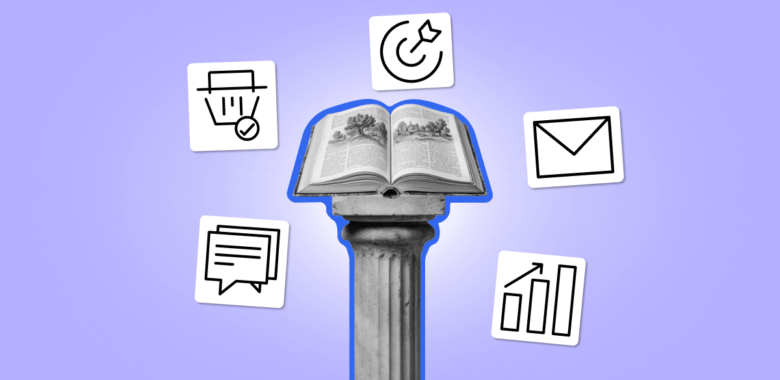Why should you check the written content for AI involvement?
The content marketing industry has been hugely affected by generative AI. From AI in email marketing to any other channel, the impact of artificial intelligence has been huge. Whether you reject it or embrace it in your industry, it’s useful to understand the origin of a piece of writing you work with and the degree of AI involvement in it.
You may think that AI involvement is bad for ethical reasons only. However, there are many practical situations when you may need AI checks and real consequences you may face if you don’t do it. Here are some reasons why you should at least contemplate AI content detection:
- To comply with regulations. Currently, there are no major requirements to label AI-generated texts. But seeing as Meta has introduced AI image, audio, and video labeling on its platforms, this may affect texts in the future, too. Plus, there may be industry or platform-specific rules you need to follow, so it’s best to know whether the content is human or AI-generated. As for Google’s perspective on things, the search engine continuously prevents spammy, low-quality content from appearing in search results. One of Google’s employees also stated that AI-generated content is considered spammy. So despite intentionally vague official positions, the search engine will actually rank your content lower if it is suspected of being AI-generated or even deindex it altogether.
- To maintain trust and transparency. This point is more about your organization’s stance on artificial intelligence. If you pride yourself, say, on your writers’ expertise and the texts turn out to be AI-generated, this makes your claim misleading. So you have to use content detection to make sure it adheres to your standards and delivers on your promises.
- To combat misinformation and disinformation. Artificial intelligence is known to hallucinate — make up facts and present them as true. If you assume that an article is entirely human-written, you may end up paying less attention to it when editing or reviewing. But knowing that a piece has traces of AI’s involvement can make you more vigilant, preventing false statements.
- To ensure human oversight. We’d argue every piece of writing should be read and reviewed by another person before publication, but in reality, you may not have enough resources to hire an editor or a proofreader. If you can’t fully analyze everything you publish, an AI detection step will at least show whether you have to read one particular piece more closely or not. Then you can focus your attention on the suspicious content and not everything all at once.
- To protect intellectual property. This point has two correlating issues. First, there are many lawsuits claiming that certain AI models use copyrighted materials. If you publish something written by an AI and not human, it can potentially have traces of those protected works. This, in turn, opens your business up to potential legal issues. And second, if your line of work depends on confidentiality, the fact that a text is AI-generated may suggest a data breach. Essentially, it may mean that the text’s author shared your information with an AI tool which is contrary to information security principles and NDAs.
Last but not least, AI checks and detection are important to uphold academic integrity. They ensure the originality of research, reports, and other works and their credibility.




















